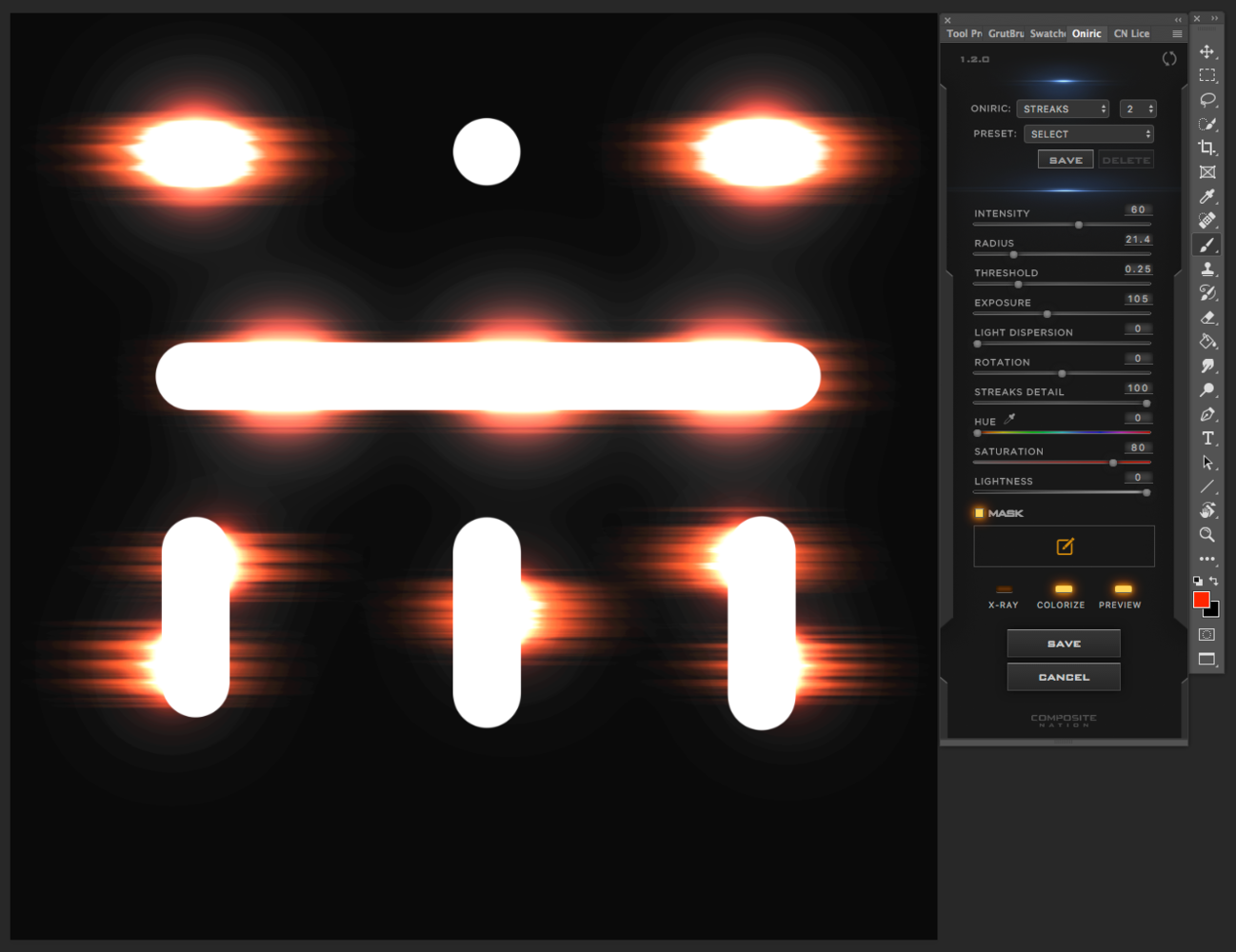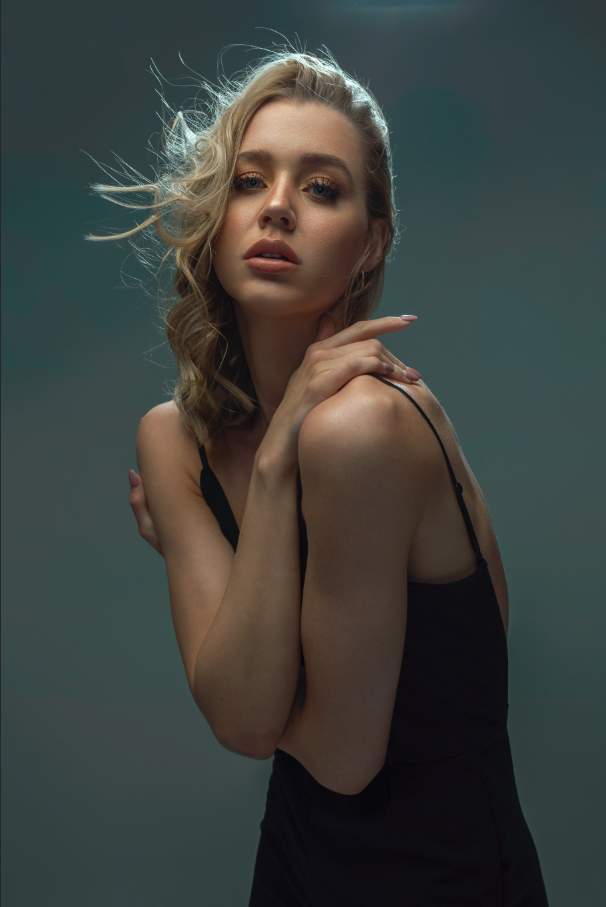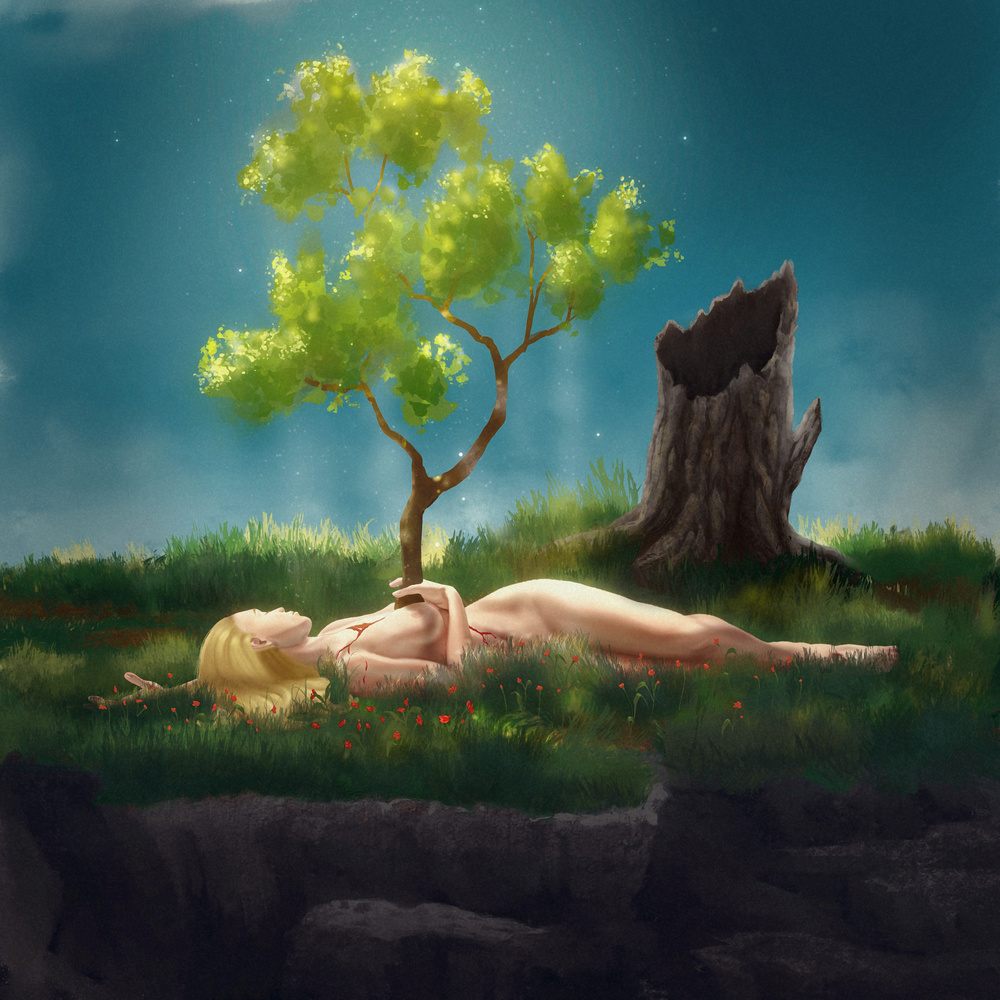Oniric is the new Photoshop plug-in from Composite Nation that creates seamless, customizable lighting effects with the click of a button.
According to the creator:
Oniric generates its glows based on the luminosity of the input image constrained by a threshold setting. Oniric is so flexible that it lets you control the glow opacity, size, exposure, light dispersion, and color. It generates two kinds of glows: Diffuse glows and light streaks. When light streaks type is enabled, you are able to control the rotation and streaks details. Oniric uses a real inverse square law algorithm to simulate a realistic light falloff the same way light is perceived in real life."
Composite Nation reached out to me during the launch of Oniric to see if I was interested in reviewing it. As someone who creates a lot of fantasy and composite work, I was excited to give it a try, because light glow can be time-consuming to believably manufacture in Photoshop, and anything that speeds up my workflow sounds like a good idea.
Composite Nation has a couple of helpful tutorials on their website, and once I finished watching them, I felt comfortable getting to work. I had a few photos in my catalog that were good candidates for Oniric, but I also wanted to create a few new pieces specifically for running the plug-in through its paces. I wanted to know if it would be as good for delicate work as it is for larger effects.
The learning curve is pretty shallow, and after a couple of false starts, I found working with the plug-in easy. Before we get into the nuts and bolts of how Oniric works, though, let me show you what it does.
As you can see, Oniric generated light effects that improved the believability of the images and created a sense of atmosphere. I wasn’t happy stopping there, though. I wanted to see if Oniric could be used in other applications, so I ran it over a digital painting I was working on.
The light glow added something truly magical to the feel of the piece, and it took me less than two minutes. In the image below, the left dot has a colorized light bloom generated by Oniric, while the right is a hand-painted light bloom I created for comparison. It took significantly longer to create by hand, and it still doesn’t look quite as clean.
Now that you have a good idea of what Oniric does, let’s look at how it actually works with some samples that aren’t contaminated by other points of interest. This video was created before the recent updates that added a couple of features, but still shows the basics of how the plug-in works.
When you run Oniric by opening up the plug-in and pressing Generate, it picks out the brightest parts of the image and creates an initial lighting effect (called Bloom in version one, but called Diffuse in the updated version) that’s essentially a light glow. It can then be adjusted using the sliders in the Oniric panel.

Since Oniric starts with a simple preset, it’s up to you to decide how to manipulate the sliders to get things just right. If you don’t see any effect at all, that’s likely because the brightest part of your image wasn’t bright enough for Oniric to pick up. To see what Oniric sees, click the X-ray button. This brings up a simulated X-ray view that shows you what parts of the image Oniric is using to generate the effect. In order to let Oniric affect more of the image, just pull the Threshold slider to the right until it shows up on the X-ray. To see how the effect is behaving, simply turn off the X-ray filter.
This is a series of lines starting with pure white and ending in middle gray.
It's also important to note that Oniric mimics the color of whatever colors are brightest but that certain colors are inherently lower in luminosity, and Oniric will not find them as easily, as seen with the X-ray option selected.
Once Oniric is using the desired parts of the image, it’s time to get creative. Here, you can change the shape of the effect, expand the radius, change the color, the light dispersion, and other tweaks that will make the effect suit your image. If Oniric is affecting the wrong parts of the image, you can open up the masking option and mask in the areas in which you want the effect to appear.


You can also add light effects to any image by painting the desired shapes on a new layer and hitting generate, then making adjustments.

Image with no light adjustments

A different set of lines using colorize
Now that we know how it works, let’s talk about the pros and cons.
What I Liked
Realistic Effect
The glows and glares created by Oniric are highly realistic and even affect the photo environment in realistic ways. To get the same level or realism by hand, it takes quite a bit of effort.
Speeds up Workflow
What used to take quite a while to paint with custom brushes, I’m now able to do in just a couple of minutes. For someone who creates a lot of subtle light effects, this is a big deal.
Customizable
I can get the light effects I want for basically any image in any color, from window-light glows to headlamps and fire. Since the effect is rendered as a smart object, I can make even more adjustments to the effect after it’s been created.
Non-Destructive
I can try several different light looks in a short amount of time, and each of them appears as a smart object, so I don’t have to worry about damaging the file or any of the other layers.
Versatile
From creating a romantic glow in a wedding photo to adding a glare to the headlights of a car in a commercial photograph, Oniric has the potential to be incredibly versatile across multiple genres of photography. I do think it’s particularly suited to composite artists and photographers who fall into the more creative genres, such as cosplay or fantasy, but could be valuable to photographers in several different fields.
What I Didn't Like
Price
I hesitate to list this as a con, because if one does compositing or special effects often, $120 for hours saved isn’t that big of a deal. But for people who will use the plug-in sparingly, it probably isn’t worth the investment.
Photoshop Only
As of now, Oniric is only available for Photoshop users, so those photographers and artists who have left Adobe behind are out of luck.
I've had this plug-in for quite a while now, and I honestly tried to find more cons, but Oniric is really well made, robust, and versatile. Since I first got my hands on it, I’ve found myself wanting to find reasons to use it and looking back over old images to see if they could benefit from a pass through Oniric. I can tell I’m going to be using this plug-in for years to come, and if Oniric is any indication of quality, I’m going to be looking out for whatever else Composite Nation comes up with in the future.
If you've used Oniric, tell us in the comments what your experiences have been!





















Really would like to buy this but, I feel the same way about how much use am I really going to get out of it. If and when it goes on sale Ill probably pick it up. Until then I'm pretty sure I can mimic everything it does in PS.
It's certainly worth considering. I'm really grateful to have used it, because it's speeds up my workflow and makes a big difference in image quality and atmosphere, but *most* of what I make has some element of compositing to it, so that makes a difference.
Hi Kip, the thing is that real professional looking glows are not that easy to achieve in Photoshop. It's a very thorough and manual process. Everybody does them differently, but generally it's done by stacking layers in linear or color dodge and screen modes with gaussian blurs, and other stuff (this doesn't cover at all the process). I've been using this pluging for a while now and you can totally see a very talented artist was behind the project, since the glows look very realistic. The light fall off is just amazing. The thing is that it is a huge time saver, since you just move the sliders and you can achieve any look you want. It has become a huge part of my editing process now. Check out their webpage it is on sale now, if you're interested.
This reminds me a lot of Knoll Light Factory which I used with Photoshop for years until they stopped updating the Photoshop version of the plugin and it stopped working. I would buy this in a heartbeat if it had a stand-alone app but I am one of those users who has left Adobe behind...
Composite Nation is actually working on stand-alone versions of this software and the future ones coming up.
When people say I'm too harsh about Adobe's lack of innovation and I see third party companies creating stuff like this, or all the red giant and Video Copilot plugins for premiere and after effects. They see it too and then come out with an updated selection tool and minor updates every six months. It's a joke and an insult.
Yup, I am always floored by the compositing and coloring tools available in the video space. Stills compositing is still so ridiculously primitive in comparison.
I don't think Adobe has any intention of changing, they haven't released any new features that I'd say meaningfully move my workflow forward in years now and performance has become worse and worse with every new update. I finally just gave up a few months ago and am not using Affinity. (Which also isn't sensational but at least I'm not paying a monthly sub to Adobe anymore)
I would drop to the $20 photoshop and lightroom and switch to davinci if not for nodes and how insane they are to work with. Why can't Adobe just be like Facebook and buy every product that is doing something cool and add it in?
Ha, well, Adobe's pockets aren't nearly as deep as Facebook's ;) But also given their reluctance to even re-architecting Photoshop so that it runs well on modern tech infrastructure I imagine that trying to integrate acquisition technology would also be something they are afraid of doing.
Only reason I first moved to a subscription was buying a 2k monitor and the text and tools were too small to see because they only gave that adjustment to newer versions. They might not have as much as Facebook but I doubt they are spending as much with only small updates once a year while guaranteed money is pouring in.
I thought this plug-in was actually going to do something.
Speaking to the various uses of this plugin, my hope is that folks can see the use of Oniric beyond the composite/special effects application. I certainly have used it on my fantasy and cosplay composite artwork, but I have also been heavily utilizing the unique look of Oniric on my gelled glamour photography and have produced results that are bringing new clients into the fold. As a matter of fact, I just picked up a magazine assignment that wants to feature a series of images of a tattoo model, featuring "that glowing thing you did in your work."
I know the price point (as Nicole has cautioned) may be above the norm for a casual user, but I challenge the casual user to see Oniric as a supplement to the creative process, regardless of the genre of photography.
This is totally a fair point, which is why I included a piece of artwork and portrait as well. Hopefully they give a little bit of an idea of what else can be done, and there is so much great stuff on the Composite Nation FB group that it would be a great place to look for examples.
Aye I was glad that you included those examples to hopefully trigger that recognition in the readers that Oniric can go way beyond just the composite/special effects realm :)
Bought this in its first version. I’ve been impressed with how they are developing it. They looked for user feedback. Its very handy .simple to use .
I waited a long time for this plug-in to be released, and It did not disappoint. In the short time I've had it, I've used on my composites, glamour, coloured gelled photos, black and white boudoir, and it added some great Headlight glows when I light painted a Corvette the other day.
The speed and quality of the glows and the extra pop it brings to your work makes the price worth it! Be happy it's not a monthly payment. And composite nation is always working on updates and asking for feedback on what to improve. You really can't go wrong with that service.
I'd be interested in how this compares to Lumiere. It looks like they both do the same thing, however Lumiere is under half the price.
Have you used Lumiere? If so, what do you think about it?
I can't say I have, although it does have a free trial so I'll be checking it out soon.
If you want to try Oniric let me know. I'm the developer / creator, I can give you a trial license so you can compare both by yourself. Feedback is always appreciated to evolve the software.
This seems like a handy tool, especially for compositors who do a lot of this work. I've been doing more and more of my effects/compositing in After Effects using the Supercomp plugin as the light wrap and other effects are just so much better than Photoshop's. But it would be nice to do more of it within PS rather than round tripping.
Hey Raymond, let me know if you would like to try Oniric :). I'm the developer / creator, I could borrow you a full trial license so you can test it. Would be nice to have an opinion of someone who uses a lot this kind of effects, send me an inbox if you are interested man!
Cheers!
Hey Mario Olvera thank you! It looked promising enough that I actually decided to go ahead and purchase it. I'll be happy to send you any feedback as I'll likely be using it on some upcoming projects.
I am very much interested by the Oniric Plugg in, but very much surprised that most of the exemples are coming from FX effects. my current interest is to find an easy solution to bring some pictures, natural lights and night lights to a Todd Hido style, brume diffusion and glow effects
could it be interesting? Thank you
Hello Alain! Totally you can create FX like Todd Hido images! If you want to try out Oniric, please write to contact@compositenation.com asking for a trial version.
You won't regret <3!